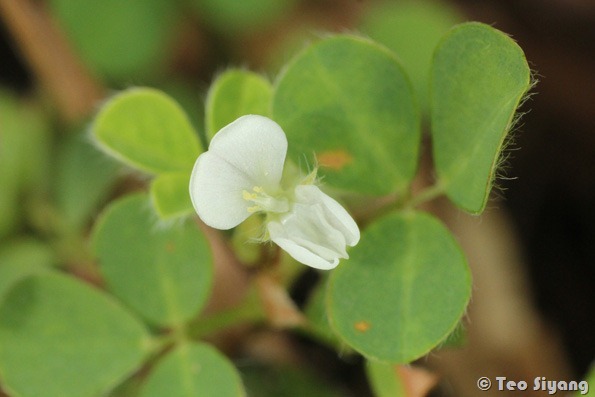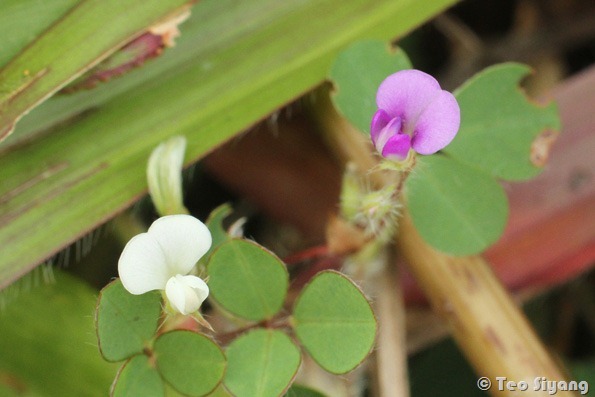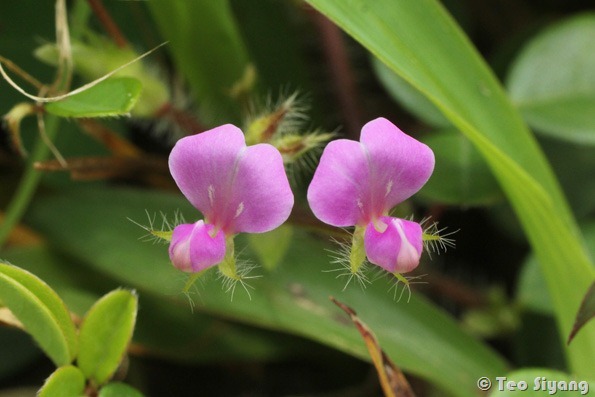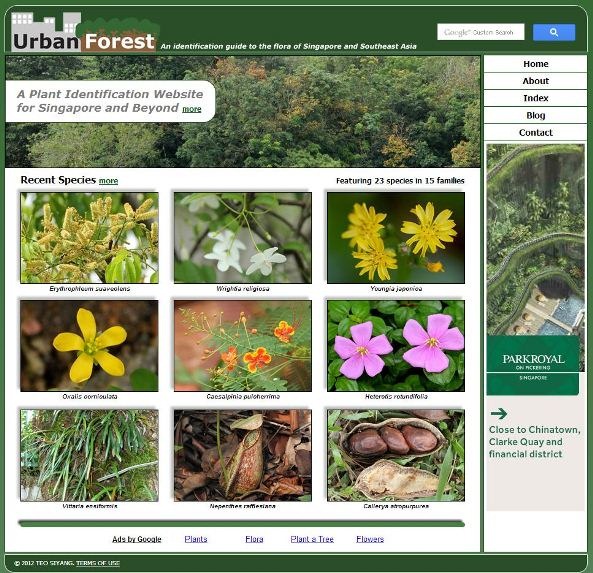The now defunct Bidadari Cemetery consists of a big parcel of open space and a forested area. I love the former because the openness of the area with the carpet of greenery gives me an unspeakable sense of awe.
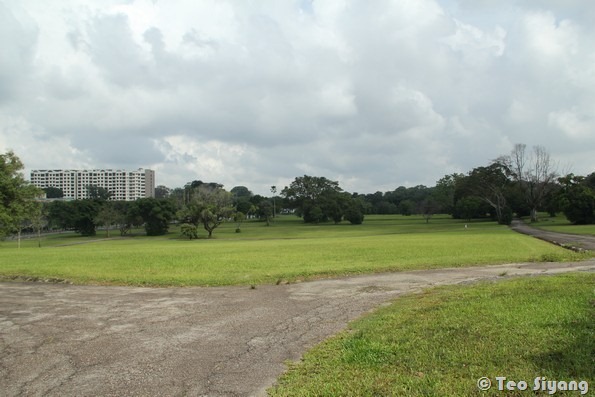
Many of the trees which stand individually have the space to grow to their full size without restriction. It is just amazing to appreciate their size and form, not to mention that they serve as excellent models for me to collect nice photographic memories of them.
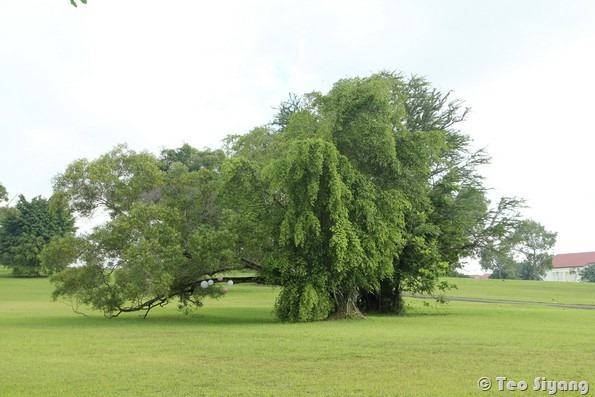
An Acacia auriculiformis with a Ficus benjamina growing on it. The stray branch extending on the left reminded me of our iconic heritage tree (Fagraea fragrans) in the botanic gardens which had graced the back of our S$5 note.
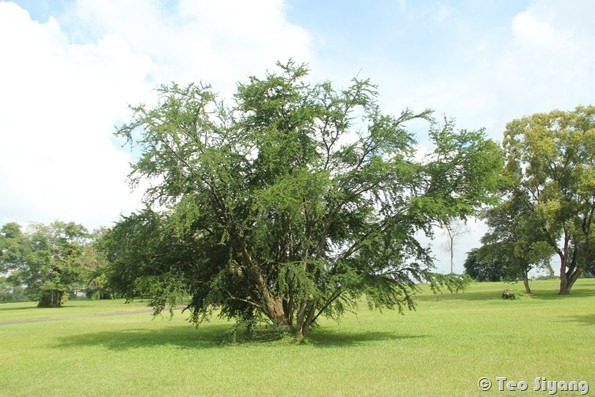
Pithecellobium dulce. I have been looking for a nice lone specimen for awhile, and this is probably the best place to take a shot of it. The straggly branches make it a very identifiable species from afar.
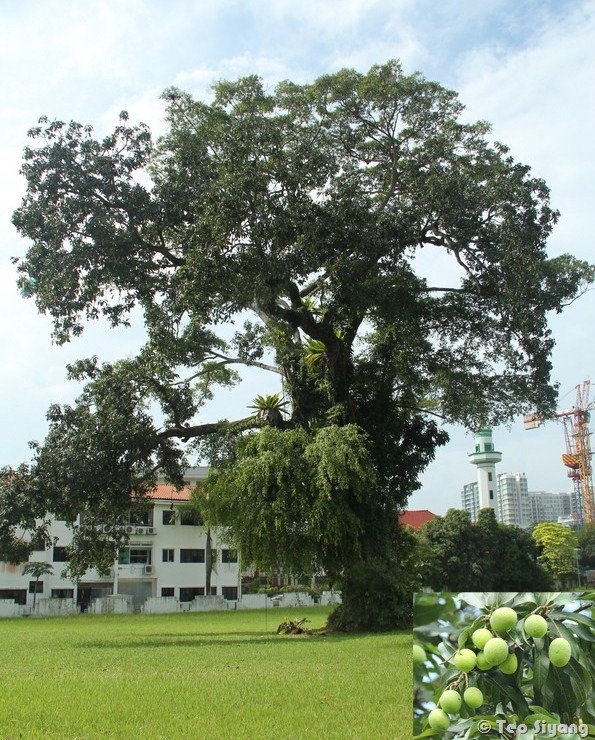
The Indian Mango, Mangifera indica. This huge tree was fruiting profusely when I was there. The mangoes are rounded compared to the typical ovate ones. Probably one of the many cultivars of the species. The tree also hosts many species of epiphytes.
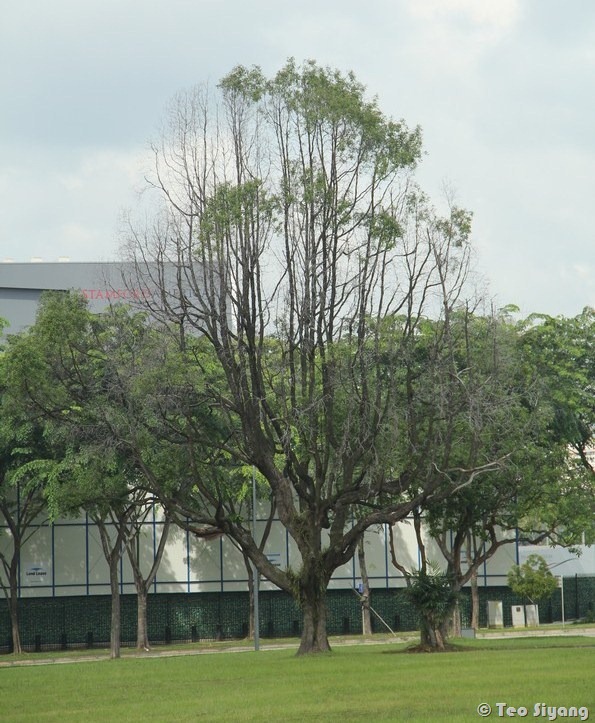
Tembusu trees (Fagraea fragrans) typical form is an architecture wonder. Its primary branches will branch into many upright spokes.
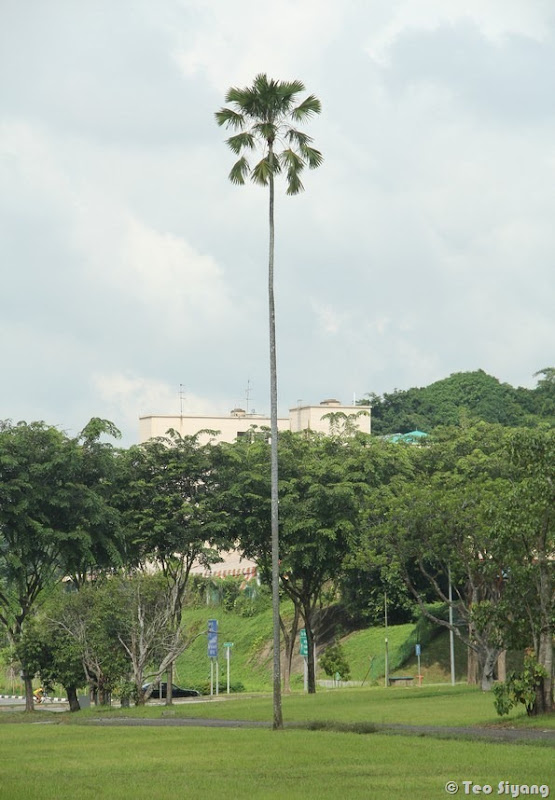
This Livistona rotundifolia palm (I think) is so tall that it is more than twice the height of the Angsana trees in the background! Beats me on why there is a need to grow so damn high, since there are zero competitors for sunlight in the surroundings.

I have seen many larger Ficus benjamina trees but this particular one captured my attention more than anyone else, probably because of its extensive drooping leaves.
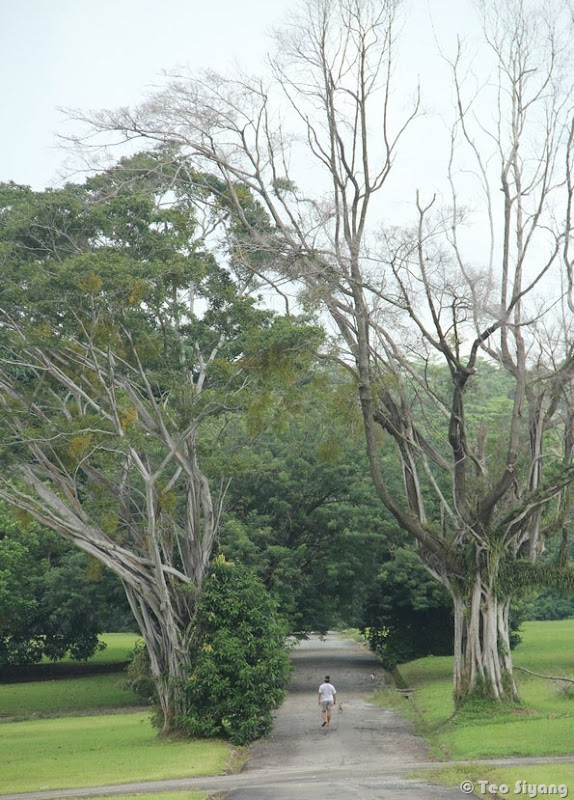
Another of the same fig species (Ficus benjamina) but this time it comes in two. The two towering figs serves as a majestic gateway for the uncle with his two adorable dogs - Beacon and Dognut, as he lovingly told me earlier. The yellow leaves from the tree on the left is actually a mistletoe, Viscum ovalifolium.
And so, a tribute to the “heritage” trees of Bidadari, before they will be fell for residential development next year. I hope at least some will be conserved!

